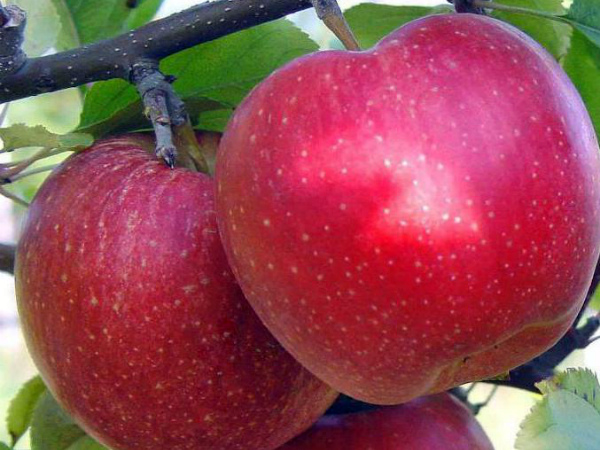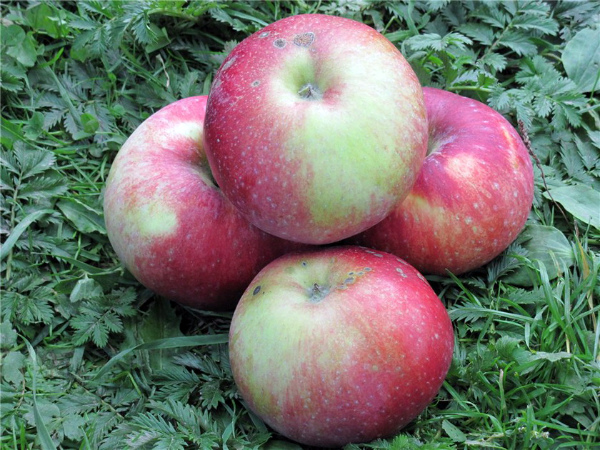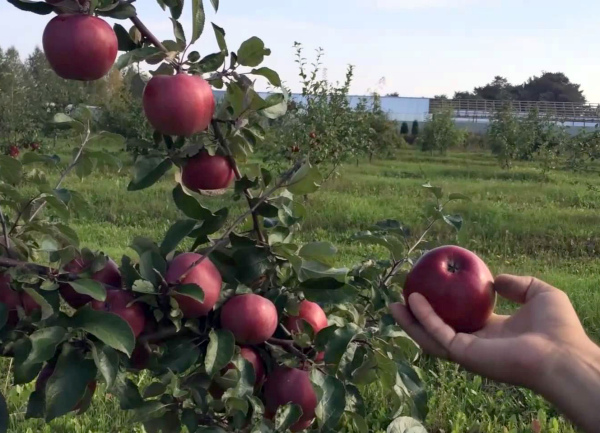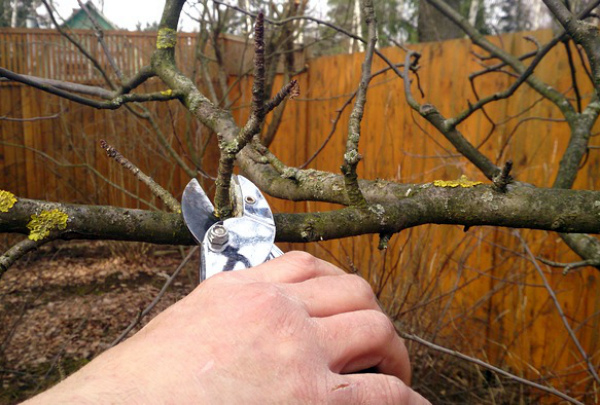Apple tree Antey - a delicious winter variety
Description of the variety
The description should start with the strongest points that the variety can boast: high keeping quality of fruits, resistance to low temperatures in winter, sustainable fruiting without depressing cycles “there will be apples this year, but not next year”.
"Antey" belongs to medium-sized varieties, the height of the tree rarely exceeds 2.5-3 m. The crown is pyramidal or round (each tree has its own way), not very dense, weak branching. A big plus is that the crown grows in tiers, so it is very convenient to prune and shape it according to your wishes.
Shoots are not very thick, brown, lentils are quite rare. The leaves are large, oval, slightly elongated, dark green, pointed at the end and rounded at the base. Due to the long petioles, the impression of a dense crown is created, although upon closer examination it becomes clear that this is not the case. The variety gives the first fruit buds already in the second year and then forms them every year. This is what distinguishes Antaeus from other apple varieties. The yield is extremely stable, so with almost 100% guarantee, you can harvest about 50 kg of apples from one tree.
The variety begins to bear fruit 2-3 years after planting the seedling, if the soil is fertile, and also if preventive treatments with fungicides and insecticides are carried out.
Fruit characteristics
The description of the fruits presented by the Antey variety can fit into a short poem. Large fruits weighing more than 200 g beckon from the branches with a green peel with a rich red, often burgundy, “blush”. There is a waxy bloom almost over the entire area of the apple, which is why its color becomes more bluish. The saucer is rather deep with a medium diameter and pronounced folds. The calyx is closed, the sepals are located tightly to each other. The chambers in which the wedge-shaped, faceted brown seeds are stored are interconnected by a cavity. Onion-shaped core.
Depending on the care and weather, the variety bears fruit in September - October, and you can store them, without resorting to special tricks, from November to May.
It should be noted that the variety has a high content of nutrients and nutrients. Here is an incomplete description:
- 13% dry matter;
- 0.65% titratable acid;
- about 10% sugars;
- 21 mg / 100 g of ascorbic acid;
- 9% carbohydrates;
- 0.4% protein;
- 12% pectin;
- 371 mg / 100 g of P-active substances.
The apple is juicy with a friable pulp, sweet and sour taste and a mild, but nevertheless very pleasant aroma.
Care features
The description fully makes it clear that with proper care, the variety will not remain in debt and will reward you with a large number of tasty and large apples. And first of all, you should talk about the landing time.
Antey is planted in the fall after the fruit trees shed their leaves. Due to its frost resistance, the seedling takes root well and is ready to go into active growth in the spring. It is important to plant (or transplant one-year-old seedlings) before the first frost to ensure the development of the root system. It is better to choose a place that is sunny, with fertile soil and neutral acidity.Given the small height of the tree, they are planted according to the 5 x 3 m pattern.
An important part of caring for this variety is pruning dead branches. It is carried out from the beginning of March to mid-May, that is, before the active formation of fruit buds begins. This is done, first of all, in order not to create favorable conditions for the development of fungal spores and woodworm. Slices must be processed with slaked lime, as well as whitewash the trunks.
“Antey” requires abundant watering, especially if the summer is hot and dry. The weekly watering rate is about 55-60 liters of water, this is enough to saturate the soil, and the moisture reaches the roots.
Three dressings are carried out during the year. The first time after the tree has bloomed, the second time during the period of fruit formation, the third time in September to support the roots.
For the first feeding, nitrogen and phosphorus are always used to stimulate the development of the kidneys. In the future, a complex of mineral and organic fertilizers is introduced. The apple tree reacts especially well to the infusion of bird droppings.
Among the pests that will have to be dealt with were noted: red aphid, leafworm, sawfly, flower beetle, weevil, moth. The list of diseases that Antaeus is susceptible to is somewhat smaller, but they are nevertheless extremely dangerous not only for this year's harvest, but also for the life of the entire tree. In the first rows are scab, to which the variety has low resistance. If the summer is damp and cold, pay special attention to the apple trees, since it is in this weather that the scab is actively developing. For preventive purposes, it is recommended to treat trees with fungicides and insecticides in early spring, as well as to remove dead or damaged branches in a timely manner.
Video "Antey apple tree"
In this video, a small overview of the Antey apple variety and a demonstration of its fruits.




